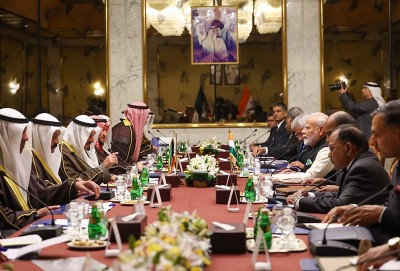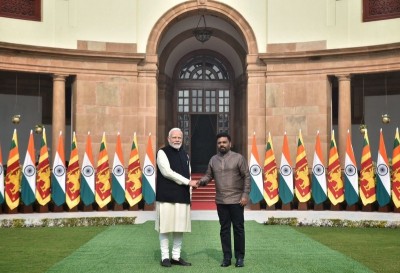
Chhattisgarh: Bijapur: Diminishing Heartland
On November 12, 2017, three Communist Party of India-Maoist (CPI-Maoist) cadres were killed in an encounter with the Security Forces (SFs) near Mankeli village under the Bijapur Police Station limits in Bijapur District. SF personnel who were on an anti-Maoist operation in the area came under Maoist fire and an encounter ensued. SFs recovered bodies of three Maoists, along with three weapons, including one INSAS (Indian Small Arms System) assault rifle, and Improvised Explosive Devices (IEDs) from the encounter site.
On September 4, 2017, a CPI-Maoist cadre was killed in an encounter between SFs and CPI-Maoist cadres in Bijapur District. SFs recovered one AK-47 rifle, magazines and a wireless set, along with other material from the encounter site.
Earlier, on June 25, 2017, a CPI-Maoist cadre was killed during an anti-Maoist operation in the Basaguda Forest near Pediya village under Basaguda Police Station limits in Bijapur District. The body of the Maoist was recovered from the encounter site.
According to partial data collated by the South Asia Terrorism Portal (SATP), at least 16 Maoists have been killed in Bijapur District thus far in 2017 (data till November 19, 2017). During the corresponding period in 2016, 28 Maoists had been killed. A total of 33 Maoists were killed through 2016. There were at least 17 Maoist fatalities in 2015, 20 in 2014, 11 in 2013, 27 in 2012, 14 in 2011, 31 in 2010, 41 in 2009, 44 in 2008, and 10 in 2007. Thus, a total of 264 Maoists have been eliminated since the creation of the District on May 11, 2007.
Out of 31 Districts across seven States from where Maoist fatalities have been recorded in the current year, Bijapur was ranked 2nd, with 16 Maoist fatalities; preceded by Narayanpur (Chhattisgarh) with 21 Maoist fatalities (data till November 19, 2017).
Moreover, according to SATP data, at least 49 Maoists have been arrested in Bijapur District in 2017 (data till November 19, 2017). During the corresponding period in 2016, 41 Maoists had been arrested, and a total of 72 through 2016. Most recently, on November 3, 2017, four Maoists were arrested following an encounter between SFs and the rebels in Bijapur District.
Mounting SF pressure also led to the surrender of 11 Maoists in 2017 (data till November 19, 2017), according to SATP data. During the corresponding period in 2016, 79 Maoists had surrendered, and a total of 85 through 2016. Significantly, on July 27, 2017, six Maoists, including, Hapka Payku (25), a 'section commander' carrying a reward of INR 300,000 on his head, surrendered in Bijapur District, citing disappointment with the "hollow" Maoist ideology.
Meanwhile, SFs suffered seven losses in the District in the current year (data till November 19, 2017). During the corresponding period of the preceding year, SFs had recorded nine losses. There was no further loss in this category in the remaining period of 2016. Thus, SFs secured a significantly positive kill ratio in these two years - 1:3.66 in 2016 and 1: 2.28 in 2017 (data till November 19 for both years), the two best kill ratios recorded in favour of SFs in the District. Earlier ratios in favour of SFs were recorded in 2008 - 1: 2.2; 2009 - 1:2.41; 2010 - 1:2.41; 2012 - 1:2.41; 2013 - 1:2.41; 2014 - 1:2.41; and 2015 - 1:2.41. On the contrary, in 2007 and 2011, the Maoists got the better of SFs, with ratios at 2.3:1 and 1.14:1, respectively. The situation on the ground has remained in favour of SFs since 2012.
The current year has also recorded the lowest number of civilian fatalities recorded since 2007. According to SATP data, at least three civilians were killed in Bijapur District in 2017 (data till November 19, 2017), as against four such fatalities recorded during the corresponding period in 2016. Fatalities in this category had been decreasing, on year on year basis, since 2015, and reached their lowest at six in 2016. A maximum of 28 civilian fatalities were recorded in 2009.
Bijapur, one of the twenty seven Districts of Chhattisgarh, was carved out of Dantewada as a separate District on March 11, 2007. With a population of 255,230 (Census 2011), Bijapur is spread over a geographical area of 6,562.48 square kilometres, of which around 1,848.07 square kilometres (28 per cent of its total area) is under forest cover. Located in the extreme south-west part of the State, Bijapur shares its boundary with the Maoist-afflicted Narayanpur District to the North; Bastar to the North-east; Dantewada to the east; Karimnagar, Warangal and Khammam Districts of Telangana on the south; and Gadchiroli District of Maharashtra on the West. Difficult terrain and natural protection, proximity with other Left Wing Extremism (LWE)-affected Districts and States (Telangana and Maharashtra), and its location partly within the densely forested Abujhmad area (which spreads over 3,900 square kilometres in Chhattisgarh), gives Bijapur immense 'geo-strategic importance' from a Maoist perspective.
Worse, the District is extremely backward and impoverished. According to the Census 2011, Bijapur's per capita income of INR 12,088 is extremely low in comparison to the State average of INR 28,263 - which itself is abysmally low (against an all-India average is 38,005). Bijapur has a significantly low literacy rate of 37.07 per cent, only better than Dantewada, with 34.38 per cent. Chhattisgarh's overall literacy rate was 70.28 per cent, and the all-India literacy rate was 73 per cent. Net Enrolment Ratio (NER) at the upper primary level in Bijapur was 28.4 per cent, much lower than the State's NER of 67.8 per cent.
Indeed, Bijapur is ranked 3rd among the worst affected, out of the 139 Maoist-affected Districts in the country, in terms of fatalities recorded in such violence since its formation in 2007. Bijapur falls under the troubled Bastar Division of Chhattisgarh, which remains the principal challenge for the State, was also listed among the eight worst affected LWE Districts in Chhattisgarh and the 35 worst-affected Districts identified by the Union Ministry of Home Affairs (UMHA) in 2010.
Despite SF successes in bringing significant improvement in the security situation, consequently, the problem lingers. The Maoists are hell bent on regaining their hold in the region. Indeed, an alert was issued by intelligence agencies on May 18, 2017, stating that over 100 armed guerrillas of CPI-Maoist from Telangana, Andhra Pradesh, and Odisha have sneaked into south Bastar and were spotted in the jungles of Bijapur-Sukma region. Intelligence sources disclosed that CPI-Maoist cadres were planning a repeat of the April 24, 2017, Sukma attack, in which 25 Central Reserve Police Force (CRPF) troopers were killed.
While fatalities in Maoist-linked violence have witnessed a sharp decline in the District (as is the case in the State and the country at large), other parameters of violence in the District remain more or less the same. According to the SATP database, at least 20 encounters between SFs and Maoists were reported in the District in the current year, as against 19 such encounters in the corresponding period of 2016, and 26 through 2016. Besides, there were at least nine incidents of seizure of arms and ammunition by SFs in 2017, during which huge caches were recovered. In 2016, during the corresponding period, there were 14 such incidents of recovery, and 16 through 2016. The Maoists have also continued to disrupt developmental works in the District. At least five incidents of disruption were reported in the District in the current year, as against two such incidents in the corresponding period of 2016 and no further such incidents in the remaining period of 2016.
Moreover, the rebels continue to threaten civilians, including the Government machinery. Most recently, Maoist banners and posters were recovered from thetehsildar's (settlement officer) office in the Usur Block (administrative unit) and other areas of Bijapur District on November 17, 2017. In the poster reportedly signed by Madvi Hidma, the South Bastar Zonal Committee 'secretary', the Maoists threatened the Chhattisgarh Forest Minister Mahesh Gagda, the patwari (Government official responsible for land records) and tehsildar of Usur Block, accusing them of "anti-people" activities. The poster also declared that journalists like Sai Reddy, who misrepresent encounters on television or in newspapers would be killed. Significantly, Bijapur-based Sai Reddy was killed at Basaguda village in Bijapur District on December 6, 2013. D. M. Awasthi, Special Director General (SDG, Anti Naxal Operations), observed, "This is the first time in recent times that they have issued a written threat like this."
A number of steps have already been taken to secure the region in particular and the State at large, though further corrective measures are still needed. On March 15, 2017, Chief Minister (CM) Raman Singh asserted, "The authorities are working on the socio-economic front in Bastar division and the results will be known soon." He elaborated further that medical services were being expanded in Bijapur District under a 'new innovative model'. In a major positive intervention, Ayyaj Tamboli, the District Collector of Bijapur, helped the District, which was facing acute doctor shortage, in filling most of the vacancies. According to Government statistics, there were 11 doctors in position in Bijapur as against 67 sanctioned post as on March 31, 2016, resulting in vacancies in 56 posts. Due to Tamboli's intervention, vacancies dropped to 20 on October 9, 2016. Moreover, Tamboli first upgraded the District Hospital, Bijapur, with funds available under the National Health Mission and the District Mineral Funds and brought in expertise and equipment with the help of the Public Health Foundation of India and the United Nations International Children's Emergency Fund (UNICEF). The hospital was also equipped with a new Intensive Care Unit (ICU), two new operation theatres, a blood bank and a 50-bed maternal and child healthcare unit. Nevertheless, medical facilities outside the District Headquarters are negligible to non-existent.
Further, on November 3, 2017, the State Government approved one Kendriya Vidyalaya and one Jawahar Navodaya Vidyalaya (JNV) for Bijapur, in its effort to improve the education infrastructure. Earlier, on July 14, 2017, School Education Minister Kedar Kashyap had stated that, on the directive of the Chief Minister, a master plan was on the anvil to make education accessible to the depressed castes and classes in 15 development blocks in 13 Districts, including Bijapur.
On November 3, 2017, Chief Minister Raman Singh stated that construction of roads in LWE-affected regions had gradually increased over the preceding three years and that, in the current year, the State had constructed 400 kilometres of new road in Sukma, Bijapur, Narayanpur and Dantewada. On October 22, 2017, Public Works Department (PWD) Minister Rajesh Munat disclosed that the Chhattisgarh Government was getting a Detailed Project Report (DPR) prepared for construction of bridges under the Centre's Road Requirement Plan (RRP) Phase-II scheme in five insurgency infested Districts of the Bastar region: Bijapur, Bastar, Sukma, Dantewada and Kanker.
Maoist violence has declined in Bijapur, as is the case in Chhattisgarh at large as well as India. However, Maoist strongholds still remain a concern. Bijapur, which falls under the formidable Abujhmad region and the troubled Bastar Division remains a challenge.
Support Our Journalism
We cannot do without you.. your contribution supports unbiased journalism
IBNS is not driven by any ism- not wokeism, not racism, not skewed secularism, not hyper right-wing or left liberal ideals, nor by any hardline religious beliefs or hyper nationalism. We want to serve you good old objective news, as they are. We do not judge or preach. We let people decide for themselves. We only try to present factual and well-sourced news.







